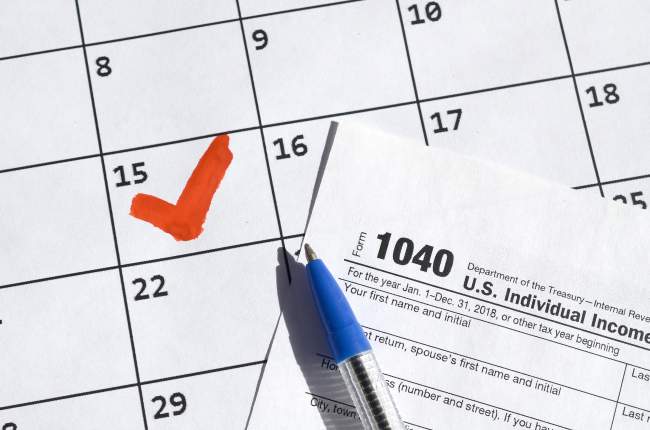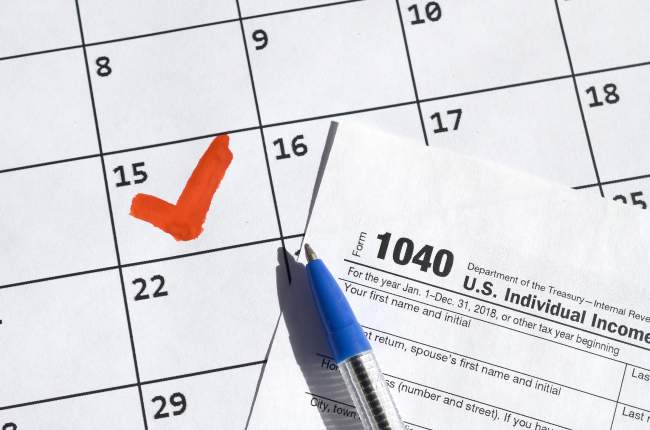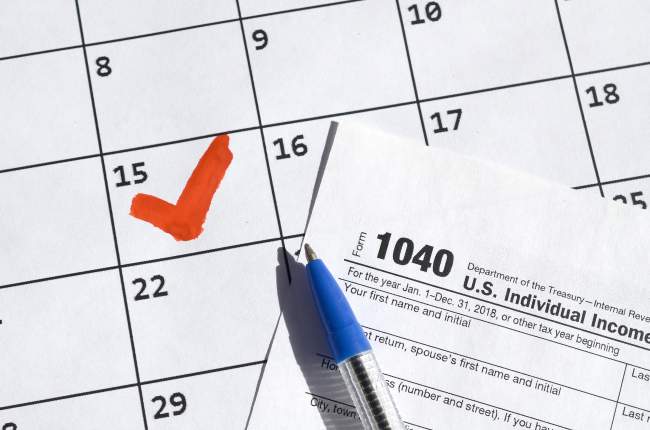As we start to settle into the new year, the commercial real estate (CRE) market continues to evolve in response to economic shifts, technological advancements, a new administration, and societal changes. In this blog, we look at key trends, top sectors to watch, and predictions shaping the commercial real estate outlook for 2025.
Economic Trends Impacting Commercial Real Estate
The CRE market is shaped by economic stability, interest rates, and inflation, key indicators that have historically been used to measure the strength of our economy. Over the past few years, the economy has faced significant challenges, with the lingering effects of the COVID-19 pandemic, disruptions in the supply chain, and historically high inflation peaking at 9.1% in 2022. These factors led to economic uncertainty, decreased business investment and consumer confidence. In response, the Federal Reserve (“the Fed”) aggressively raised interest rates to combat inflation, resulting in higher borrowing costs and reduced business and consumer spending. Now, as inflation begins to decline, cooling from its peak in 2022 down to 2.7%, the Fed has been gradually lowering interest rates, implementing a 0.25% cut in December 2024. This means that the Fed has reduced rates by a total of 1% since September 2024. Currently, the Fed’s rate sits at 4.25-4.5%, and is expected to drop further to 3.75-4% by the end of 2025. These measures aim at stabilizing the economy, encouraging investment, and supporting growth among sectors such as commercial real estate.
Key CRE Market Influences:
Interest Rates: Lower rates could support higher property values and transaction volume by making financing more affordable. On the other hand, prolonged high rates, such as those seen in recent years, may suppress property values and transaction volume by making financing more expensive, limiting affordability, thus reducing demand.
Economic Growth: A stable or expanding economy will sustain demand across most CRE sectors, though a slowdown could weaken office and retail markets.
Inflation: Sectors like multifamily and self-storage, which can adjust rents quickly, are better positioned to weather inflationary pressures.
What does this mean for the CRE market? Lower rates could make borrowing more affordable, fueling property acquisitions and new development. Meanwhile, economic growth remains strong, the S&P 500 gained 22.5% in 2024, house prices increased 6.8%, and real disposable income rose 3.1%. This is projected to aid in driving consumer spending growth of 2-4% in 2025, supporting continued strength in the CRE market.
Top Sectors Poised for Growth in 2025
Office Space
The U.S. office market is showing signs of stabilization after years of volatility. In the third quarter of 2024, the national office vacancy rate held steady at 20.1%, with some suburban markets experiencing improving capitalization rates. However, regional disparities persist.
The hybrid work model has become a permanent fixture in the workforce, reshaping the demands for office space as companies prioritize flexibility and collaboration. Businesses are seeking amenity-rich environments that foster productivity and sustainability, driving demand for modern Class A office spaces. In contrast, older, less efficient buildings face ongoing challenges in attracting tenants.
The return-to-office (RTO) movement is a key factor in the projected rise in office space occupancy levels in 2025. Additionally, co-working and flexible office spaces are experiencing strong demand, reflecting the ongoing evolution of the office market.
Geographic Trends and Growth Opportunities
Regional Market Disparities: While some cities like New York maintain a relatively low vacancy rate of 13.1%, other like San Francisco continue to struggle with elevated rates, sitting at 36.5%.
Growing Interest in Suburban Markets: Offices in suburban areas near major cities are gaining popularity as businesses seek cost-effective and accessible alternatives.
Looking ahead in 2025, the office sector is expected to strengthen, with continued demand for high-quality spaces in prime locations. Companies are increasingly investing in mixed-use environments with strong amenities to encourage in-person collaboration, while outdated office properties will continue to face difficulty. This presents a great opportunity for investors interested in acquiring an underperforming office property as part of a 1031 Exchange, specifically, an improvement exchange. https://www.accruit.com/blog/1031-exchanges-involving-construction-and-… Exchanges present a strategic opportunity for investors to modernize outdated office spaces by utilizing a portion of exchange funds into upgrades that could enhance efficiency and general market appeal, investors can better position their properties to meet the demands and expectations for office space in 2025.
Industrial Real Estate
The industrial real estate sector continues to perform strongly in 2025, driven by sustained demand for e-commerce, manufacturing, and logistics facilities. The increasing expectation for same-day delivery is prompting companies to establish distribution centers closer to urban areas, while the expansion of online grocery shopping is fueling demand for cold storage. To enhance efficiency and reduce labor costs, warehouses are integrating robotics and automation, solidifying the sector’s position as a leader in innovation.
As the digital economy expands, the need for industrial properties, including trucking terminals, logistics centers, warehouses, storage facilities, and manufacturing plants, continues to grow. Consumers now expect rapid delivery of everything from household essentials to prepared meals, driving companies to invest in localized industrial real estate rather than relying solely on regional hubs. Investors and developers recognize that this trend will continue in 2025 and beyond.
Market Trends and Growth Factors
Declining Vacancy Rates: In Q3 2024, industrial vacancy rates fell to 6.7%, reversing two years of gradual vacancy increases. These rates remain well below pre-pandemic levels, which averaged around 7%, highlighting the resilience of the sector.
E-Commerce & Logistics: Online sales accounted for 23.2% of total retail sales (excluding auto and gas) in Q3 2024 and are projected to reach 25.0% by year-end 2025, sustaining high demand for fulfillment centers, distribution hubs, and last-mile facilities. Third-party logistics (3PL) providers are expected to be the leading source of new space absorption.
Cold Storage: The continued rise in grocery delivery and pharmaceutical logistics is increasing demand for temperature-controlled storage facilities.
Digital Infrastructure: The rapid expansion of cloud computing, AI, 5G, and blockchain is driving historically high demand for data centers, server farms, and cell towers. Despite high construction costs and power limitations, demand is expected to outpace new development, keeping vacancy rates at record lows.
With e-commerce growth and technological advancements continuing to reshape supply chains, industrial real estate remains a critical sector. Developers and investors focused on logistics, cold storage, and digital infrastructure will be well-positioned for long-term success.
Multifamily Rental Property
The multifamily rental sector is primed for continued growth in 2025 as rising home prices and mortgage rates push more individuals into the rental market. Demand remains strong across all segments, as homeownership becomes increasingly out of reach for many households. The growing popularity of Build-to-Rent (BTR) communities is further reshaping the rental landscape, offering an alternative to traditional homeownership for those seeking single-family living without the financial barriers of buying.
Market Trends & Projections
Vacancy & Rent Growth: The national multifamily vacancy rate is expected to rise slightly, reaching 4.9% by the end of 2025, driven by the surge in new rental supply, including the growth of Build-to-Rent communities. While this increase in available units provides renters with more options, it may drive up vacancy rates. However, strong demand, fueled by population growth and affordability challenges in the for-sale housing market, is projected to sustain annual rent growth at around 2.6%.
Regional Growth Hotspots: Cities with strong job markets and increasing population levels will see the highest absorption rates, particularly in the Sun Belt and Mountain West regions.
Record-High Supply: Developers are delivering more multifamily units than at any time since the 1970s, with some markets expanding their rental inventory by nearly 20% in just three years.
Impact of Housing Affordability & Mortgage Rates
Persistently high home prices and mortgage rates are widening the cost gap between buying and renting, ensuring sustained demand for rental housing. As of Q3 2024, newly originated mortgage payments were 35% higher than the average apartment rent, making homeownership unattainable for many. While this premium is expected to decrease slightly to 32% by the end of 2025, it will still be enough to keep many renters in the market longer.
Long-Term Rent Growth Outlook: Over the next five years, multifamily rents are projected to grow at an average annual rate of 3.1%, exceeding the pre-pandemic average of 2.7%. This trend will slightly narrow the gap between the cost of buying and renting, but renting will remain the more affordable option in most markets.
Regional Cost Disparities: High-cost cities like Austin and Los Angeles currently have some of the highest homeownership premiums, where buying is more than 2.5x the cost of renting. While this premium will shrink in the coming years, it will remain significantly higher than in other parts of the country.
Fastest Declining Premium Markets: Cities like Phoenix, Salt Lake City, and Nashville are among those expected to see the largest declines in homeownership premiums over the next five years due to strong renter demand and slowing multifamily construction.
By mid-2025, the initiation of new multifamily construction projects is expected to be 74% lower than its peak in 2021 and 30% below pre-pandemic levels, indicating a slowdown in new housing supply. As the flow of new development slows down, stronger rental demand will push vacancy rates lower and drive above-average rent growth into 2026. With economic factors keeping many households in the rental market longer, multifamily real estate will continue to be a resilient and attractive investment opportunity in the years ahead.
Opportunities and Challenges for 1031 Exchange Investors
For investors conducting a 1031 Exchange, these economic trends influencing the CRE market present significant opportunities and challenges. Lower interest rates and continued growth in sectors such as industrial real estate, multifamily, and office spaces offer opportunities to acquire properties with strong cash flow potential. Those seeking to defer associated taxes while reinvesting in expanding sectors are expected to benefit from favorable market conditions.
However, with the slowing of multifamily construction and growing demand of rental property, the competition for quality rental properties may increase, potentially driving up prices. Investors aiming to utilize a 1031 Exchange may find it more challenging to identify suitable Replacement Property(ies) that meet the requirements of IRC §1031, especially as available inventory dwindles. In such cases, investors may need to explore alternative exchange structures, such as improvement or build-to-suit exchanges, which allow Exchangers to utilize exchange proceeds to the make necessary improvements or modifications in their Replacement Property(ies) to ensure that their property meets their investment needs.
Additionally, investors may dispose of underperforming assets through a 1031 Exchange and reinvest in high-growth sectors, positioning themselves for stronger returns. With the slowing of new office space development and shifting market demands, opportunities are emerging, particularly in suburban and flex spaces. Investors can acquire older, outdated office buildings as their Replacement Property and conduct an improvement exchange to modernize and enhance their property, making them more competitive and desirable in this evolving market. By making improvements to meet tenant preferences of amenity-rich, high-quality spaces, investors can maximize property value and attract more demand. Understanding these market dynamics will allow investors utilizing 1031 Exchanges to make informed decisions, identify emerging opportunities, and ensure they’re maximizing the benefits of their exchange.
Economic trends are shaping the future of commercial real estate, creating both challenges and opportunities. As demand for high-quality spaces continues to grow, sectors like office, industrial, and multifamily real estate will thrive. Developers and investors who stay informed and adapt to shifts in the market will be well-positioned to capitalize on these evolving dynamics, ensuring long-term success in the ever-changing CRE market.
The material in this blog is presented for informational purposes only. The information presented is not investment, legal, tax or compliance advice. Accruit performs the duties of a Qualified Intermediary, and as such does not offer or sell investments or provide investment, legal, or tax advice.
Sources
The Commercial Real Estate Outlook for 2025 | Investing | U.S. News
U.S. Real Estate Market Outlook 2025 | CBRE








